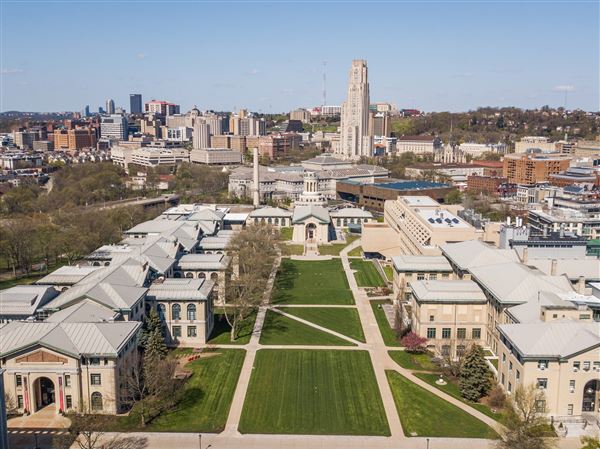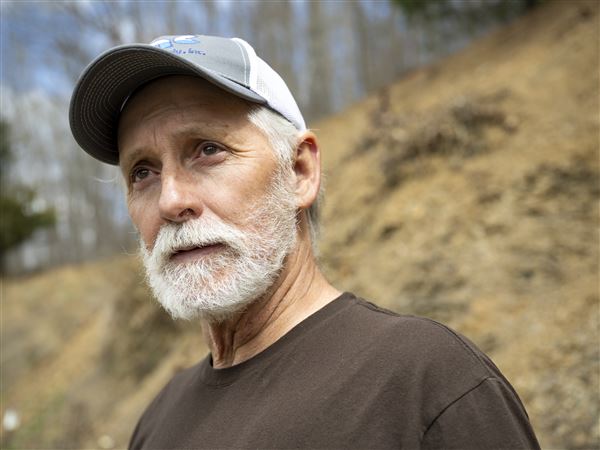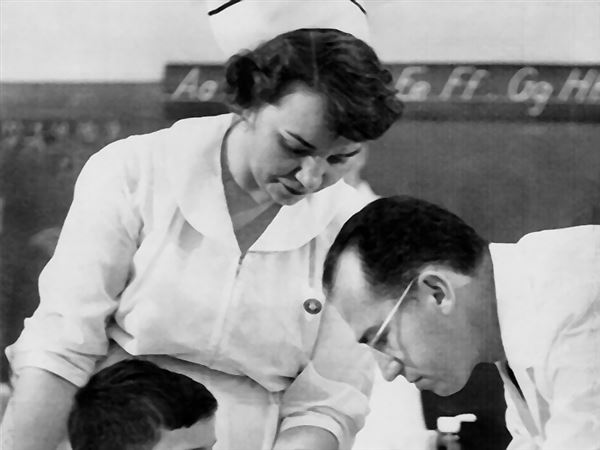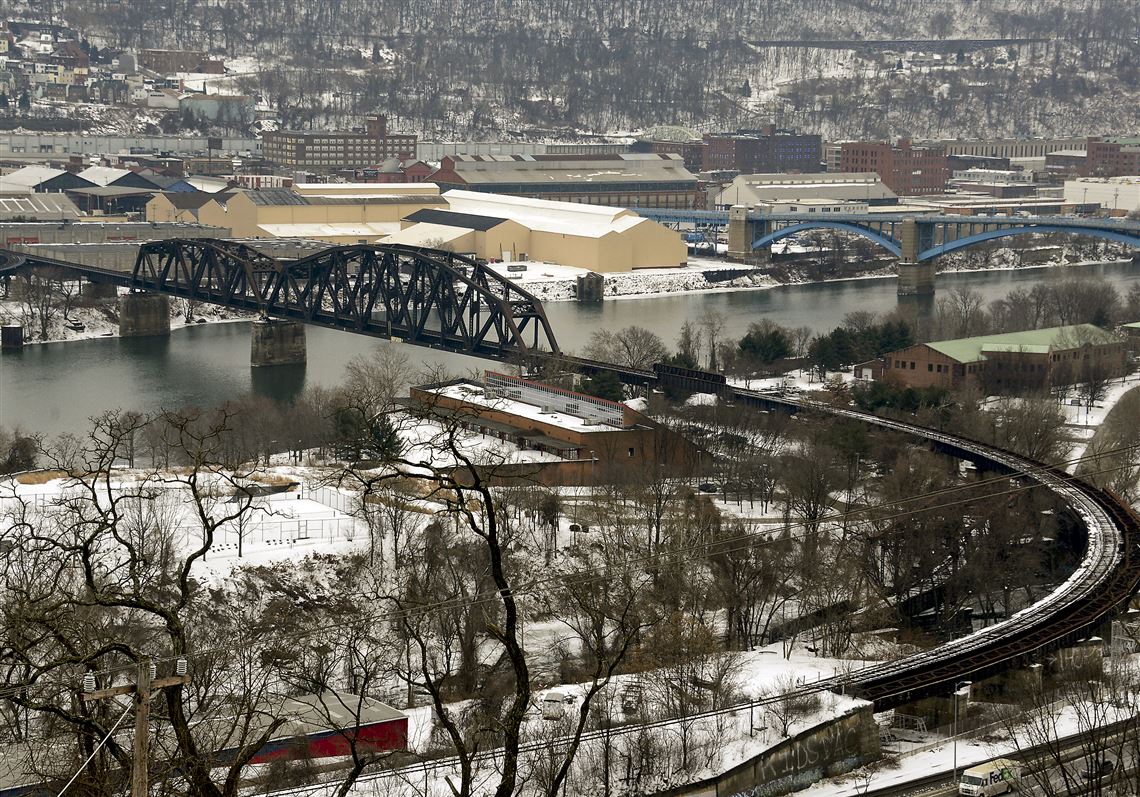Diesel exhaust and dust from trucks carrying thousands of loads of coal to the Homer City Generating Station had turned trees along the route black.
Those trips — and the accompanying pollution — were eliminated after the Buffalo & Pittsburgh Railroad rebuilt a former Baltimore & Ohio spur line in 2005. Each train can deliver the equivalent of several hundred truckloads of coal to the electricity-generating plant in Center, Indiana County.
The overgrown line to the generating station was restored with the help of a grant from the Rail Transportation Assistance Program, or RTAP, which is managed by the Pennsylvania Department of Transportation.
“This project benefited the Buffalo & Pittsburgh Railroad, but it also meant improvements in the quality of life for the broader community,” railroad executive Jerry Vest said. “It took thousands and thousands of trucks off the road.”
Mr. Vest is senior vice president for government and industry affairs for Genesee & Wyoming Railroad Services Inc., the parent of the Buffalo & Pittsburgh.
RTAP funding, raised through state borrowing, has been augmented in recent years with Rail Freight Assistance Program, or RFAP, grants. Money for the RFAP projects is being raised through higher wholesale gasoline taxes, auto registration charges and driver’s license fees. Those increases were part of the state’s 2013 transportation bill, known as Act. 89. The law was passed to raise more money for road and bridge repairs, public transit and a multi-modal fund, which covers ports and waterways, freight and passenger rail, aviation, bicycle and pedestrian projects.
“It’s very important to have a transportation system that supports all modes and connections,” PennDOT spokeswoman Erin Waters-Trasatt said. “Pennsylvania has a rich history with railroads, and we see dividends throughout our economy from support of freight rail.”
Major freight carriers CSX, Norfolk Southern and Canadian National operate in southwestern Pennsylvania as do 16 regional and short-line railroads.
The most recent round of RTAP and RFAP grants brought state spending on rail improvement projects to more than $167 million since January 2011.
The state funds can cover up to 70 percent of a rail-related project’s costs.
The latest group of 39 projects approved by the Pennsylvania State Transportation Commission received $36 million in funding. The improvements cover a variety of undertakings, ranging from rehabilitating a railroad bridge to replacing turnouts, or switches.
Growth of the Marcellus shale industry has added to the demand for rail improvements.
PennDOT has identified 20 RTAP and RFAP projects associated with the natural gas development since 2010, according to spokeswoman Jamie Legenos. They include five in the greater Pittsburgh area.
The Pittsburgh, Allegheny and McKees Rocks Railroad, a switching company that serves industries in McKees Rocks, received a $350,000 grant to help pay for new turnouts, new track and rehabilitation of existing track. The number of rail cars handled by that line has grown steadily in response to higher demand from customers in the oil, gas and de-icing industries, Ms. Legenos said.
Improvement grants are not necessarily made just to railroad companies. A grant for $1.5 million to the Westmoreland County Industrial Development Corp. will help pay to replace worn rails on a county-owned line linking Greensburg and Scottdale.
The industrial development agency owns 33 miles of track in Westmoreland and Fayette counties that CSX and the former Conrail had planned to abandon. “The IDC purchased both lines to assure that rail services would be maintained for companies along their routes,” executive director Jason Rigone said. His agency contracts with Southwest Pennsylvania Railroad to operate trains on the lines.
The agency’s tracks interconnect with each other and with CSX and Norfolk Southern lines. The properties that Southwest serves include the RIDC Westmoreland complex, formerly a Volkswagen and Sony manufacturing plant near New Stanton.
Work on the replacement of 3.2 miles of substandard rail is scheduled to begin in the spring. Mr. Rigone estimated that the line carries around 10,000 railroad cars each year.
Another RTAP grant permitted the Buffalo & Pittsburgh to replace an old wooden trestle in Butler County with a steel structure that can carry much heavier trains. Buffalo & Pittsburgh trains on that rail line in Chicora, north of Butler, provide critical freight service to three chemical companies. “They employ about 800 people and all three depend on rail service,” Mr. Vest said.
The latest round of rail projects will help to sustain almost 34,000 jobs, according to state statistics.
Other local projects funded with RTAP and RFAP funds included $1.9 million to Allegheny Valley Railroad Co. The money will be used to rehabilitate the railroad bridge over Washington’s Landing at 33rd Street that links Troy Hill and the Strip District. The work will increase its weight capacity and reduce a curve on the span.
The Pittsburgh & Ohio Central Railroad, another short line operated by the Genesee & Wyoming, received $713,020 to realign track, construct 4,460 feet of new track, vbuild a new turnout and create a second long track in its Scully Yard in Crafton.
Union Railroad was approved for a $701,960 grant to repair the approaches on the north and south portals of the line’s North Bessemer Tunnel in Penn Hills. Union Railroad is owned by Transtar Inc., a subsidiary of U.S. Steel Corp.
U.S. Steel itself will use $1.9 million for several rail-related projects. They include constructing a rail siding at its Clairton Yard and installing track panels and four new turnouts at its Clairton Works. The steel maker also will install track panels and three new turnouts at its Edgar Thomson Works in North Braddock and install cross ties, track panels and two new prefabricated turnouts at its Irvin Works in West Mifflin. Track panels are pre-fabricated sections of rail and ties.
Wheeling & Lake Erie Railway Co., based in Brewster, Ohio, received $3.2 million to install 14.5 miles of continuous welded rail on its Pittsburgh subdivision lines in Allegheny County.
The Buffalo & Pittsburgh also received $2 million for work on its lines between Kittanning and New Castle in Armstrong, Butler and Lawrence counties.
Lehigh Specialty Melting Inc. in Latrobe received $229,026 to reconstruct 850 feet of outside track and 200 feet of track inside its forge shop.
Railroads are a capital-intensive business, the Genesee & Wyoming’s Mr. Vest said. That makes state aid important in carrying out improvements to keep up with growing demand.
Regional and short-line railroads remain a critical part of the state’s rail network for moving raw materials and finished goods cheaply and efficiently. “They provide transportation for the first and last mile of any rail journey,” he said.
Len Barcousky: lbarcousky@post-gazette.com or 724-772-0184.
First Published: March 13, 2015, 4:00 a.m.



















